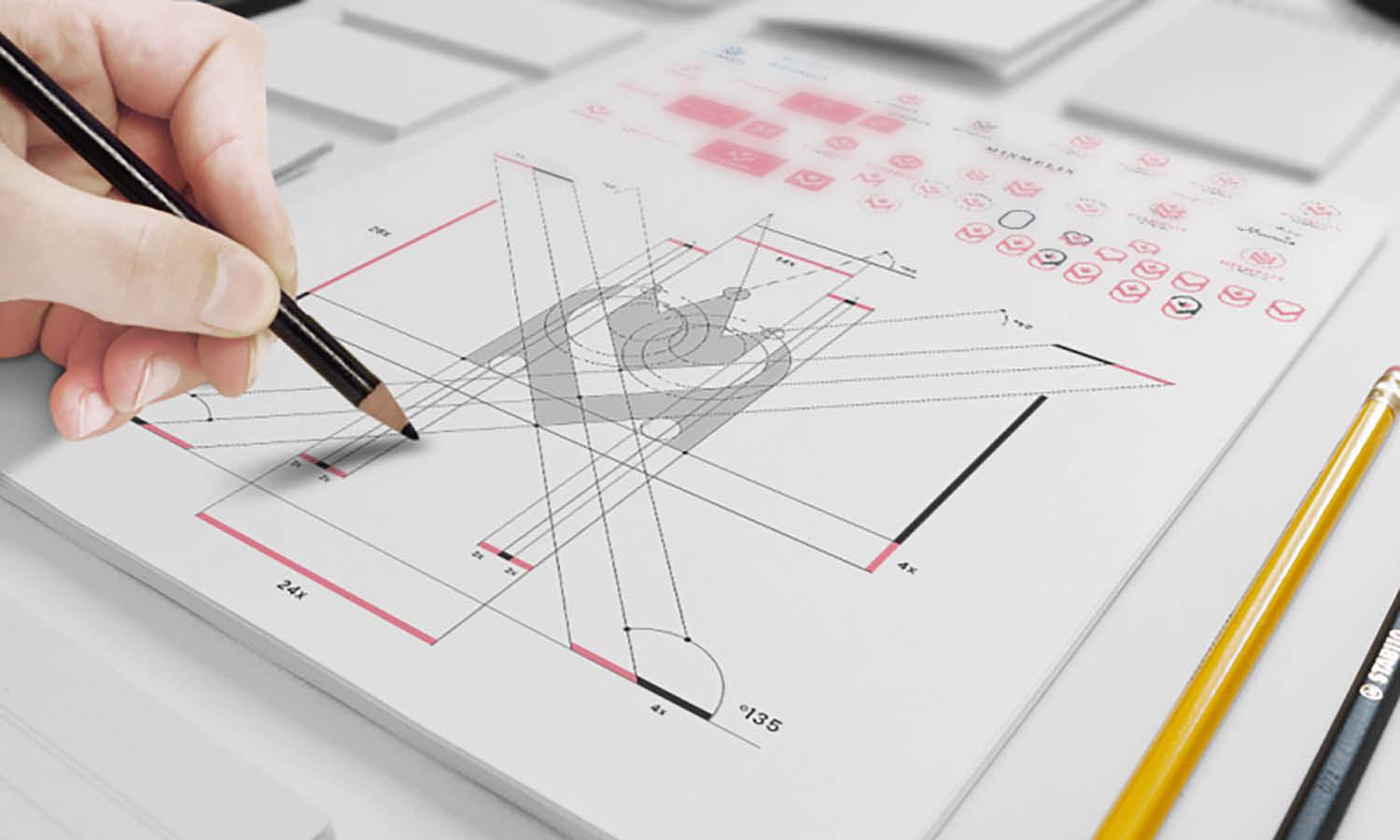Graphic Designer Salary Basic Information & Guide

Exploring the financial prospects of a career in graphic design is crucial for both emerging artists and seasoned professionals. The term graphic designer salary encompasses a diverse range of earnings, reflecting variations in experience, specialization, and geographical location. This guide aims to provide an insightful overview of what graphic designers can expect to earn throughout their careers.
Starting with entry-level positions, we will explore how initial salaries set the stage for financial growth. As designers gain experience and refine their skills, their earning potential increases significantly, especially for those who specialize in high-demand areas like digital media or user experience design. Moreover, the decision between freelance and full-time employment also plays a critical role in shaping one's salary trajectory.
This article will serve as a comprehensive resource, offering detailed information on the factors that influence graphic designer salaries, effective negotiation strategies, and future trends in the industry. Whether you are just starting your career or looking to advance further, understanding the financial landscape is key to making informed career choices.
Overview of Graphic Designer Salaries
The graphic designer salary landscape is dynamic and varies widely depending on several factors including geographic location, industry, and level of expertise. Entry-level graphic designers may start with salaries as low as $35,000 annually, while experienced designers at senior levels can earn upwards of $85,000 per year. The median salary for graphic designers, according to recent data, hovers around $50,000, reflecting the mid-point of earnings across the spectrum.
Specialization within the field also affects income potential. Designers focusing on digital interfaces or user experience typically command higher salaries due to the technical skills and high demand in tech and marketing sectors. Similarly, those working in major metropolitan areas often see elevated salary ranges owing to the high cost of living and competitive business environments in these cities.
Despite these variables, the role of a graphic designer remains fundamentally creative, requiring a blend of artistic talent and technical proficiency. This combination ensures that skilled designers are always in demand, with salary potential increasing as they gain experience and refine their expertise. As the digital landscape continues to evolve, the value placed on professional graphic design skills appears set to rise, promising a rewarding career path for those entering the field.
Factors Influencing Salary
Several key factors influence the salary of a graphic designer, making each individual’s career trajectory unique. Experience is perhaps the most significant factor; entry-level designers typically earn less, while those with several years of professional work can negotiate higher wages. Geographic location also plays a crucial role, as salaries in urban centers generally surpass those in smaller cities or rural areas due to higher living costs and greater demand for design services.
Education and specialized skills can further impact earning potential. Designers with advanced degrees or certifications in emerging fields like user experience or multimedia design often have a competitive edge in the job market. Industry choice is another critical factor, with designers in advertising, public relations, and specialized design services typically earning more than their peers in printing or publishing.
Furthermore, the type of employment—whether freelance, agency, or in-house—can affect income. Freelancers might command higher hourly rates but face variable workloads and fewer job security benefits, such as health insurance or retirement plans. On the other hand, full-time designers enjoy more stable incomes and often receive additional compensation in the form of bonuses and benefits.
Entry-Level Graphic Designer Salary Expectations
Entry-level graphic designers are often curious about their potential earnings as they step into the professional world. Initially, the salary for a newcomer in the field of graphic design can vary significantly, with starting salaries typically ranging from $35,000 to $45,000 annually. These figures can be influenced by the type of company, the complexity of projects, and the location of employment.
Graduates entering the field may find that agencies and design firms offer structured salary scales, whereas startups and smaller companies might provide compensation packages that include other forms of remuneration, such as equity or performance bonuses. Geographic location remains a critical factor; for example, designers in major cities like New York or San Francisco may start on the higher end of the salary range due to the higher cost of living.
For entry-level designers, building a robust portfolio and gaining practical experience through internships or freelance projects can be key strategies to increase their initial salary offerings. Networking within the industry and continuous learning to keep up with the latest design tools and trends will also empower new designers to negotiate better terms and accelerate their salary growth.

Freelance Graphic Designer Salary Range
Freelance graphic designers enjoy the flexibility to set their own rates, which can vary widely based on their expertise, market demand, and the specific nature of each project. Unlike salaried positions, freelance graphic designer salaries are not fixed and can range from $25 to $150 per hour, reflecting a broad spectrum of opportunities and market conditions. Experienced freelancers with a solid reputation and specialized skills in high-demand areas such as UI/UX design or digital branding can command higher rates.
The income of freelance graphic designers also depends heavily on their ability to consistently secure projects. Successful freelancers often spend a significant amount of time networking, marketing their services, and managing client relationships to maintain a steady workflow. Location again plays a crucial role, as freelancers in larger metropolitan areas or those serving international clients may be able to charge more due to higher living costs and global market rates.
For many freelancers, project-based fees can also be an attractive option, allowing them to agree on a fixed price for the entire project, which can sometimes lead to better earnings than hourly rates, especially for faster workers.
Impact of Education on Graphic Designer Salary
Education can significantly influence a graphic designer's salary, shaping not only the starting pay but also career progression opportunities. A higher educational attainment, such as a bachelor's or master's degree in graphic design or a related field, typically correlates with higher initial salaries compared to those with an associate degree or high school diploma. Advanced degrees often open the door to senior roles and specialized positions that command greater compensation.
Furthermore, specialized training in high-demand skills like UX/UI design, motion graphics, or digital marketing can enhance a graphic designer's earning potential. Certifications from recognized industry software like Adobe Creative Suite or Sketch also add value to a designer’s resume, making them more attractive to potential employers and clients who are willing to pay a premium for proven expertise.
Differences in Salary by Industry
The industry in which a graphic designer works can have a profound impact on their salary. Designers employed in high-tech industries, advertising agencies, and corporate branding typically enjoy the highest salaries. These sectors value cutting-edge design skills and are often at the forefront of market trends, driving demand for top-tier design professionals who can command higher wages.
Conversely, graphic designers working in the publishing sector, non-profit organizations, or small startups might find their salaries are on the lower end of the spectrum. These industries often have tighter budgets and less profit potential, which can limit the salaries available to designers.
Moreover, working as an in-house designer for large corporations in sectors like finance, health care, and technology often comes with substantial salaries and comprehensive benefits packages, reflecting the critical role of design in these industries' consumer interactions. These companies typically invest heavily in their branding and are willing to pay for experienced professionals who can deliver high-quality work.
The entertainment and video game industry also offers lucrative opportunities for graphic designers, especially those skilled in animation and 3D design. The unique demands and creative challenges of these fields often result in higher compensation rates.
Experienced Graphic Designer Salary Potential
Experienced graphic designers can expect significant growth in their salary potential, particularly as they acquire specialized skills and assume higher responsibilities. With several years of experience, graphic designers often move into senior positions such as Senior Designer, Art Director, or Creative Director, roles that command higher salaries due to their increased responsibility and impact on a company's overall visual branding and strategy.
On average, experienced graphic designers can earn anywhere from $65,000 to $90,000 annually, with those in leadership positions or specialized fields such as UX/UI design or motion graphics reaching six-figure salaries. The high end of the salary range typically belongs to those working in major metropolitan areas where large corporations and tech companies offer competitive salaries to attract top talent.
Moreover, experienced designers with a robust portfolio of successful projects can negotiate better terms for their employment, including bonuses, profit-sharing plans, and other benefits. Their expertise not only brings them higher wages but also more opportunities for freelance consulting work, which can further augment their income.
Career longevity also allows designers to build extensive networks and personal brands, which can open doors to lucrative projects and collaborations that are not available to less experienced peers. Therefore, maintaining a commitment to continuous learning and staying updated with industry advancements is crucial for maximizing salary potential as an experienced graphic designer.

Salaries in Different Design Roles
Salaries for graphic designers can vary widely depending on their specific roles within the field. Entry-level positions such as junior graphic designers or production artists often start with lower salaries, ranging from $35,000 to $45,000 annually. As designers gain skills and experience, they can move into more specialized roles which command higher salaries.
For instance, UX/UI designers and motion graphics designers are currently in high demand, with salaries typically ranging from $50,000 to $85,000, depending on the designer's experience and the complexity of their skill set. Designers who specialize in digital experiences or mobile app development tend to be at the higher end of this range due to the specialized knowledge and technical proficiency required.
Art Directors, who oversee the conceptual and stylistic direction of media production, generally earn between $70,000 and $100,000. Those who reach the pinnacle of their careers as Creative Directors can command salaries upwards of $100,000, with top earners in major markets or at high-profile companies exceeding $150,000 annually.
In contrast, graphic designers working in advertising, marketing, or public relations might see a different scale of salary progression. These positions typically offer salaries based on the scale of campaigns and the size of the client accounts managed.
Certifications and Their Effect on Salary
Certifications can play a pivotal role in boosting a graphic designer's salary, serving as a testament to their expertise and commitment to professional growth. Obtaining industry-recognized certifications can help designers stand out in a competitive job market and can lead to higher pay scales. For instance, Adobe Certified Expert (ACE) certification demonstrates proficiency in Adobe's software suite, which is crucial for most design roles today.
Specialized certifications in tools and technologies such as UX design, digital marketing, or 3D animation can also significantly impact salaries. These credentials show that a designer is not only skilled in traditional design principles but is also adept at using digital tools that drive business results. For example, a graphic designer with a UX certification can earn between 10% to 30% more than their non-certified peers, especially in companies that value data-driven design practices.
Furthermore, certifications may lead to more opportunities for advancement into senior roles where leadership and specialized knowledge are required. Designers with certifications are often considered for promotions sooner, as these qualifications can be an indicator of a professional's ability to handle more complex projects and lead teams.
Salary Growth Opportunities in Graphic Design
One key to salary growth in graphic design is specialization. Designers who specialize in high-demand areas such as digital interfaces, user experience (UX), or motion graphics often see faster salary growth compared to those in more traditional roles. For example, the transition from a general graphic designer to a UX designer can result in a substantial increase in salary, reflecting the specialized skills and direct impact on user engagement and business outcomes.
Additionally, leadership roles provide a clear pathway for salary advancement. As graphic designers gain experience, they can move into positions like senior designer, art director, or creative director. These roles come with higher responsibilities, including overseeing design projects and teams, and consequently higher salaries. For instance, moving from a graphic designer to a creative director can triple the salary, depending on the company and location.
Staying updated with industry trends, continually upgrading skills, and expanding professional networks are also crucial for designers aiming to capitalize on salary growth opportunities within the field. These actions position designers favorably for promotions and new job offers, enhancing their career trajectory and salary potential.
Conclusion
Understanding the nuances of a graphic designer salary is key to maximizing your career potential in this vibrant field. Whether you're just starting out or looking to advance, consider how factors like location, specialization, and experience level can influence your earnings. As the industry continues to evolve with technological advancements, the demand for skilled designers is likely to increase, offering numerous opportunities for financial growth. Staying informed and adaptable will ensure that you remain competitive and well-compensated in your graphic design career.
Let Us Know What You Think!
Every information you read here are written and curated by Kreafolk's team, carefully pieced together with our creative community in mind. Did you enjoy our contents? Leave a comment below and share your thoughts. Cheers to more creative articles and inspirations!
















Leave a Comment